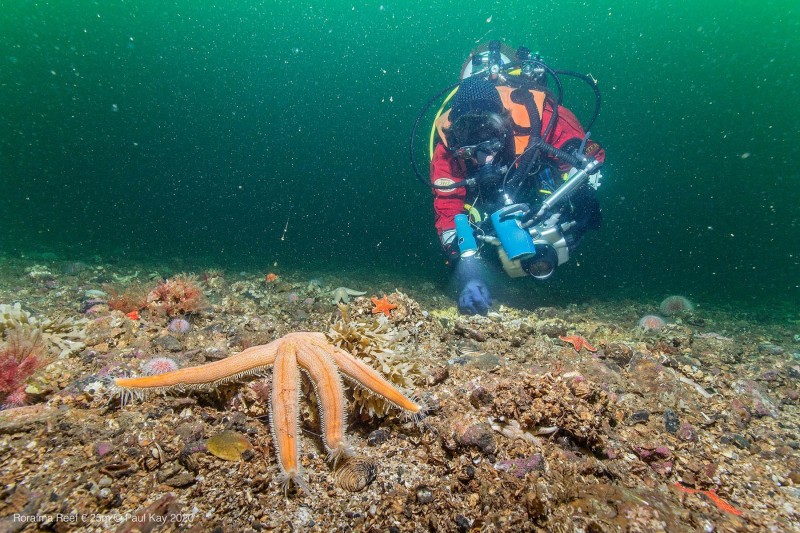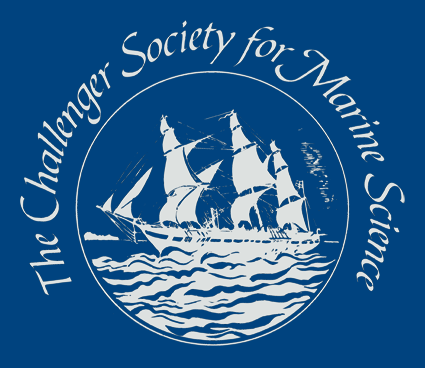Collecting flame shells (Limaria hians) in Scotland
Danielle Sloan
School of Biological Sciences, University of Aberdeen

Image 1: COAST MPA Project Officer, Lucy Kay, examining the surface of the South Arran MPA flame shell bed for flame shells. (Photo credits: © Paul Kay)
When I began my PhD in October 2019, I anticipated the usual challenges - moving to a new city, dealing with administrative bureaucracy, developing working relationships with colleagues and supervisors, deep diving into new subject areas. However, I had no clue that we were only months away from the start of a global pandemic. Within months of starting, my research plans were thrown out of the window as international borders closed and government lockdowns and restrictions rolled out, all with no end in sight.
After several months of interruptions and delays to my research and training, an exciting opportunity arose to participate in a two-week intensive in-person Next Generation Sequencing (NGS) training course at Nord University (Norway). Complementary to this, an opportunity to conduct fieldwork to answer crucial questions about the reproductive biology of my study species - the flame shell, Limaria hians - in Norway also arose. I was incredibly lucky that several societies, including the Challenger Society, wanted to support my participation in these activities and I am grateful to them all for that support.
However, as with many plans made during the pandemic, things didn’t go as expected. A week before I was due to travel to Norway, the Norwegian government made the decision to keep their borders closed. So, it was back to the drawing board to come up with another plan.
We reached out to the Community of Arran Seabed trust (COAST), with whom we had previously worked with to collect specimens for use in my genetic research into the connectivity of Scottish flame shell beds, to ask if they would be able to assist. After a few meetings with their project coordinator, Lucy Kay, and co-founder, Howard Wood OBE, to hash out the logistics, COAST agreed to volunteer their time, dive skills and boat to collecting monthly samples for my research.
Image 2: An exposed flame shell on the surface of the flame shell bed. (Photo credits: © Lucy Kay)
Since March 2022 we have had 5 successful sampling trips, with plans for more over the next few months. With every trip, I learn more about flame shells, not only through the collected samples, but also through speaking with the divers who are able to see these incredible animals in their natural environment. I have also had the chance to learn more about the South Arran MPA and the Lamlash Bay No Take Zone (NTZ) which was the first community-led marine reserve of its kind in Scotland when it was established in 2008. Furthermore, the entire experience of having to change and adapt plans at later stages has made me more resilient as a researcher.
COAST have been integral to my research into the reproductive biology of flame shells, and I want to thank every member who has dedicated their time and energy to further our knowledge of this species. Finally, I would like to thank the Challenger Society once again for its support in partially funding this fieldwork.
Profile
Danielle is a PhD researcher at the University of Aberdeen working in collaboration with Marine Scotland Science. She is funded by the Scottish Universities Partnership for Environmental Research (SUPER) Doctoral Training Partnership (DTP), the University of Aberdeen and Marine Scotland Science.
Using bio-physical modelling and population genetics in a multi-disciplinary approach, Danielle is investigating the connectivity of Scottish flame shell (Limaria hians) populations. She has previously researched flapper skate (Dipturus intermedia) population distributions in the Loch Sunart to the Sound of Jura MPA for her Master of Science (MSci) thesis in addition to volunteering at Bimini Biological Field Station.
https://www.abdn.ac.uk/people/d.sloan.19
Latest News
Marine Data Management, Governance and the MEDIN toolset
The Marine Environmental Data and Information Network (MEDIN) and OceanWise are delighted to invite you to attend our popular free online training workshop: ‘Marine Data Management, Governance and the MEDIN toolset’ on the 19th – 23rd of May 2025.
Workshop on the contribution of UK Arctic Ocean science to the International Polar Year 32/33
12:00 11th June – 16:00 12th June 2025: NOC Southampton (In-person with online option): Registration deadline 16th May
REGISTER HERE
Pre-meeting questionnaire (open to all)
The purpose of this workshop is for the UK Ocean Science community to discuss and then draft a prospectus document outlining the priority Arctic research questions the community would like to address during the run up to, throughout and beyond the International Polar Year 32/33. Additionally, to identify what unique strengths and technologies the UK has to help fill these knowledge gaps.
The second day of the workshop will be dedicated to writing groups, one for each of the priority research questions identified - from both the pre-meeting questionnaire (HERE) and day one discussion. By the end of the meeting, each group will have produced draft text and sourced supporting figures for the prospectus.
Post meeting, the draft will be opened for comments and suggestions from everyone, regardless of whether they were able to attend the workshop or not. It will then be shared with UK funders (UKRI, FCDO, DSIT, ARIA) and potential international programmes with whom we would like to collaborate (e.g. Arctic 2050, Norway). It will form a basis from which wider integration with terrestrial, atmospheric and cryosphere communities can be built, e.g. at the UK Arctic Science Meeting in September in Northumbria.
To ensure balanced community and ECR representation, and to ensure that the size of the writing groups is efficient and effective, if the number of registrations from individual institutes becomes overwhelming, we may contact individuals or teams and ask that each institute selects a smaller number of individuals to attend in-person. Please wait for confirmation of in-person attendance before finalising travel arrangements.
The workshop will be open to hybrid attendance and contributions on both days.
Challenger Society Council Position Vacancy
The Challenger Society for Marine Science (CSMS) are pleased to announce an exciting opportunity to support the next generation of ocean scientists and innovators. CSMS are looking for a new Council member to fill the Student Travel Awards and Stepping Stones Portfolio. The successful applicant will administer the travel and research grants available for Early Career Researchers.
The role involves:
- Receiving applications for the two schemes and responding to applicant inquiries
- Soliciting and compiling input from the rest of the Council for assessing the applications
- Communicating with successful and unsuccessful applicants for the two schemes
- Working with the Honorary Treasurer on allocating funds to successful applicants
- Following up with award winners on their reporting requirements
- Attending Council meetings four times a year (in person or online) and contributing to discussions and decision making for CSMS
The usual term for Council members is three years.
For more information about the CSMS Council, please follow this link: https://www.challenger-society.org.uk/The_Council
For more information about our Early Career Researcher grants and awards, please follow this link:
https://www.challenger-society.org.uk/Stepping_Stones
and
https://www.challenger-society.org.uk/Travel_awards
If you are interested in applying or have any questions regarding the role, please contact kathen@bas.ac.uk
